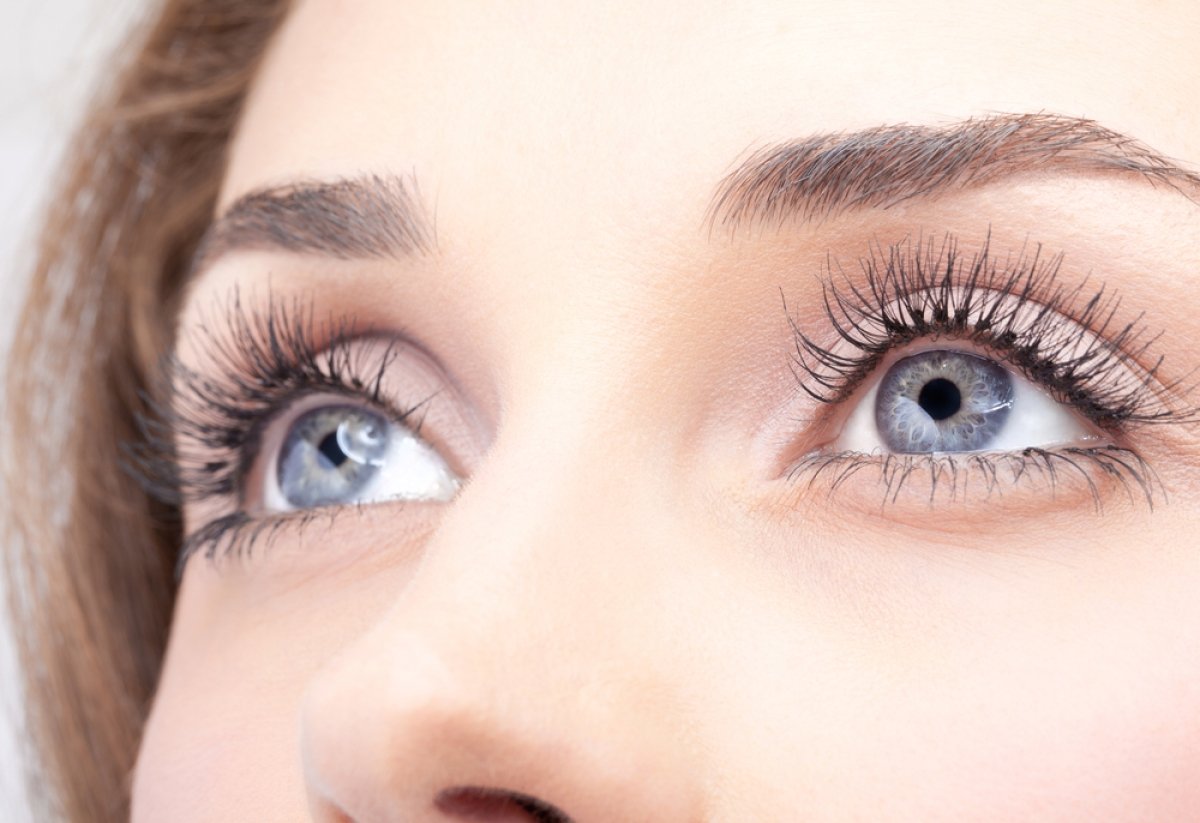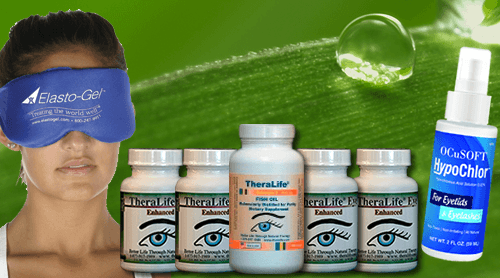TheraLife.com offers a range of products that benefit customers by providing natural solutions for managing blepharitis and other eye conditions. Their offerings are designed to address underlying causes such as inflammation, dryness, and Demodex mites, promoting overall ocular health. TheraLife’s products are formulated to enhance circulation, reduce irritation, and support eyelid hygiene, making them effective for soothing irritated eyelids and improving comfort. With a focus on natural ingredients and holistic approaches, TheraLife aims to deliver relief and improve the quality of life for those suffering from eye-related issues.
Key Takeaways
- Apply warm compresses on closed eyelids for 5-10 minutes to loosen crusts and enhance drainage.
- Maintain eyelid hygiene by cleansing daily with a gentle, non-irritating cleanser to reduce inflammation.
- Use diluted tea tree oil to massage eyelids and target Demodex mites linked to blepharitis symptoms.
- Consume omega-3 fatty acids through dietary supplements to reduce inflammation and support ocular health.
- Apply pure aloe vera gel on eyelids to alleviate inflammation, redness, and discomfort.
Warm Compresses
Applying warm compresses is an effective initial treatment for managing blepharitis. This approach offers several warm compress benefits, including the loosening of crusts and debris on your eyelids, which can alleviate irritation.
By enhancing blood circulation, warm compresses also promote the drainage of blocked meibomian glands, reducing inflammation and discomfort. When performing compress application, verify the compress is at a comfortable temperature—warm, not hot—to prevent skin injury.
To apply, soak a clean cloth in warm water, wring out excess, and gently place it over your closed eyelids for 5-10 minutes. Re-warm the cloth as needed to maintain ideal temperature.
Repeating this process 2-3 times daily can lead to significant symptomatic relief. Remember, consistency in application is key to maximizing therapeutic effects. For enhanced treatment outcomes, consistency in application is crucial, as multiple applications per day can significantly improve results.
Eyelid Hygiene
Maintaining proper eyelid hygiene is an important step in managing blepharitis and preventing its recurrence. Implementing a daily regimen of eyelid cleansing can greatly reduce inflammation and irritation. Use a gentle, non-irritating cleanser to remove debris and bacteria from the eyelid margins. After cleansing, apply eyelid moisturization to maintain adequate hydration and promote skin barrier integrity. Consistency in this routine is vital for best results. For additional relief, consider using warm compresses (5-10 minutes, twice daily) to improve meibomian gland function and alleviate symptoms.
| Step | Action | Purpose |
|---|---|---|
| 1 | Wash hands thoroughly | Prevent contamination |
| 2 | Use a mild cleanser | Perform eyelid cleansing |
| 3 | Gently scrub eyelid margins | Remove debris and bacteria |
| 4 | Rinse with warm water | Guarantee complete residue removal |
| 5 | Apply moisturization | Maintain skin hydration |
Incorporate these practices to effectively control blepharitis symptoms.
Tea Tree Oil
Tea tree oil, known for its antimicrobial and anti-inflammatory properties, has shown potential in managing blepharitis symptoms. By leveraging tea tree benefits, you may reduce eyelid inflammation and irritation.
Clinical studies suggest that essential oil usage can effectively target Demodex mites, often linked to blepharitis. To apply, dilute tea tree oil with a carrier oil, guaranteeing safe concentration levels to prevent adverse reactions.
Gently massage the mixture onto your eyelids with a sterile cotton swab, focusing on the eyelash base. This method can help alleviate discomfort and lessen mite populations. Consistent application may enhance symptom relief, promoting eyelid health. It is important to maintain eyelid cleanliness, as regular cleaning and care can significantly reduce flare-ups.
Always consult with a healthcare professional before incorporating new treatments, especially with essential oils, to guarantee safe and effective usage.
Omega-3 Fatty Acids
Although often overlooked, omega-3 fatty acids play an essential role in managing blepharitis symptoms. These polyunsaturated fats, primarily found in fish oil and flaxseed oil, are vital for maintaining peak eye health.
They work by reducing inflammation, which is a key factor in blepharitis. You can obtain omega-3s through dietary supplements, making it easier to guarantee adequate intake. Research indicates that consistent consumption of omega-3 supplements can alleviate discomfort associated with eyelid inflammation, consequently contributing to overall ocular health.
Incorporating omega-3 fatty acids into your routine not only supports your eyes but also provides systemic benefits, like improved cardiovascular health. The purity and quality of TheraLife Omega-3, achieved through molecular distillation, ensures that you get the highest potency and safety in your supplements.
Always consult with a healthcare professional before starting any new supplement regimen to tailor it to your specific needs.
Aloe Vera Gel
Aloe vera gel, renowned for its anti-inflammatory and soothing properties, can be an effective home remedy for blepharitis. When applied topically, it may alleviate inflammation and discomfort associated with this condition.
The gel’s soothing properties help reduce redness and swelling, providing relief for irritated eyelids. Clinical studies suggest that aloe vera benefits include antimicrobial effects, which may help combat bacterial growth often linked with blepharitis. To enhance the effectiveness of home remedies, individuals should prioritize good hygiene practices such as regular eyelid washing to prevent bacterial buildup.
To utilize aloe vera, apply a small amount of pure gel directly to the eyelids with a clean cotton swab. Let it sit for a few minutes before rinsing gently with lukewarm water. Consistent use can contribute to maintaining eyelid hygiene and reducing flare-ups.
Always verify the aloe vera product is free from additives or preservatives.
Frequently Asked Questions
Can Diet Changes Help Reduce Blepharitis Symptoms?
Dietary adjustments can indeed help you manage blepharitis symptoms by focusing on inflammation reduction.
Consuming omega-3 fatty acids, found in fish and flaxseeds, is clinically shown to reduce eyelid inflammation. You should also consider increasing your intake of antioxidants and vitamins A, C, and E, which support eye health.
Reducing processed foods and sugars can further decrease inflammatory responses.
Consult with a healthcare professional for personalized dietary guidance.
Are There Any Specific Exercises to Improve Eyelid Health?
You won’t believe how much eyelid massages and vision exercises can revolutionize your eyelid health!
These techniques are like magic for weary eyes. Gentle eyelid massages stimulate blood circulation, enhancing meibomian gland function.
Vision exercises, such as the 20-20-20 rule, fortify eye muscles, reducing strain. Evidence-based studies highlight their effectiveness in improving overall eyelid health.
How Does Stress Impact Blepharitis Flare-Ups?
Stress can exacerbate blepharitis by promoting inflammation and weakening your immune response. Effective stress management is essential for reducing flare-ups.
Engage in techniques like mindfulness and deep breathing to enhance your emotional health. Evidence shows that a stable emotional state can mitigate stress-induced symptoms.
Ensuring adequate sleep and exercise further supports eyelid health by maintaining hormonal balance, consequently reducing the likelihood of stress-related blepharitis exacerbations.
What Are the Best Eyelid-Friendly Makeup Products?
When selecting eyelid-friendly makeup, focus on hypoallergenic mascara to reduce irritation risks.
Choose products labeled as “ophthalmologist-tested” and “fragrance-free.”
A nourishing eye cream is essential to maintain hydration and support the delicate skin barrier.
Clinical studies indicate that formulations with ceramides and hyaluronic acid enhance skin resilience.
Prioritize non-comedogenic options to minimize pore blockage.
Always conduct a patch test before application to guarantee compatibility with sensitive skin conditions.
Can Certain Allergies Worsen Blepharitis Symptoms?
Imagine Sarah, who loves spending time outdoors, notices her blepharitis flaring up every spring.
Yes, certain allergy triggers, like pollen, can indeed worsen blepharitis symptoms by activating your immune response.
When you encounter allergens, your body intensifies its immune response, potentially exacerbating eyelid inflammation.
Clinical studies confirm that managing allergies effectively can reduce blepharitis flare-ups.
Consider consulting an allergist for personalized advice to mitigate these immune-triggered reactions.
Conclusion
In addressing blepharitis, consider your eyelids as delicate landscapes that require attentive care. TheraLife offers a range of products designed to benefit customers by soothing and nurturing these sensitive areas. Through the use of warm compresses and maintaining eyelid hygiene with TheraLife’s specialized products, you can ease irritation effectively. Their formulations, enriched with natural ingredients like tea tree oil and omega-3 fatty acids, help reduce discomfort and inflammation. Additionally, TheraLife’s products aim to provide long-term relief by nourishing the entire system, much like a gentle rain revitalizes a garden. With consistent use, users can experience a transformation from irritation to clarity and comfort, supported by clinical evidence and customer testimonials.




